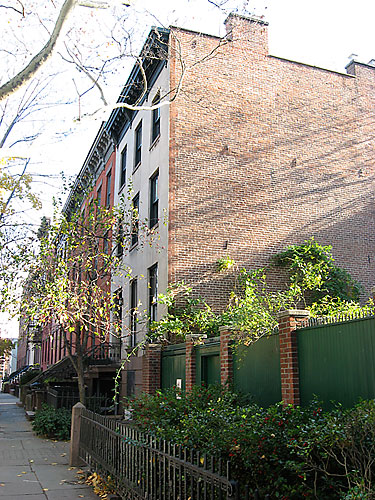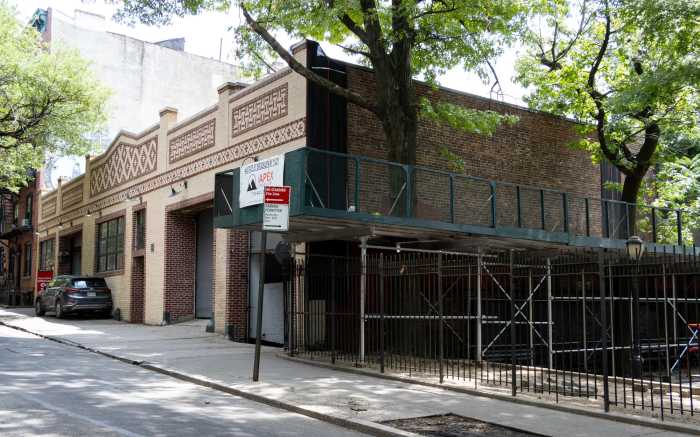Norah Jones, whose smooth, soul-searching songs have pulled on America’s heartstrings, might have a new superlative to add to her resume: Architectural revolutionary.
The singer, who became an international star with her 2002 album, “Come Away with Me,” has won her battle to transform the windowless side wall of her Amity Street mansion by punching out 10 windows. Earlier this year, Jones’s decorator got local and city approval to do some minor renovation work to the rear of her building, which is inside the Cobble Hill Historic District — but then came back in November with an amended plan to add 10 windows to the wall.
Approval was granted — indeed, the window work was called “minor” — without another round of public hearings.
To fight back, the Cobble Hill Association is now saying that there are at least 70 houses inside the historic district that have similarly windowless walls — so if Jones is allowed to set a precedent, the resulting domino effect could change Cobble Hill forever.
The renovations are “completely inconsistent with the character of the Cobble Hill Historic District, especially for early 19th-century structures of this kind,” said Roy Sloane, the president of the Cobble Hill Association.
Most Cobble Hill rowhouses — including Jones’s house between Henry and Clinton streets — were built from 1827 to 1845 in the Greek Revival style, which is noted for a tendency to shun ostentation in the hopes of preserving privacy. The austere houses have been mostly untouched since the landmark designation in 1970.
The addition of numerous windows to the exposed sides of the houses throughout the neighborhood would seem to run contrary to this aesthetic, though Jones herself has defended them as not “out of character” with Cobble Hill.
And a spokeswoman for the Landmarks Preservation Commission agreed.
“Some people think the renovations are terrific,” said Lisi de Bourbon, the spokeswoman. “They add depth and visual interest to a blank wall.”
But Sloane said the only interest he had was in fairness. If Jones succeeds, it will send a message to all wealthy homeowners that all they need to do is hire top-notch designers who have the know-how and influence to take advantage of the “loophole” of amending earlier-approved plans, as Jones’s architect did.
Sloane also suggested that the Landmarks agency may have allowed Jones’s renovations with a wink and a nod because of her celebrity — a claim that the agency denied.
“Our regulations allow this type of work,” de Bourbon said. “There were no loopholes.”
Yet as Norah Jones is poised to install her windows, Sloane remains convinced that those 10 architecturally inappropriate apertures are the window not merely to Jones’s living room, but her soul.
“To live in a good neighborhood,” he said, “you have to be a good neighbor.”
Perhaps Jones is sending Sloane a message back. Her big new song, after all, is titled “Back to Manhattan.”
“I’ll go back to Manhattan/As if nothing ever happened,” she croons.

























